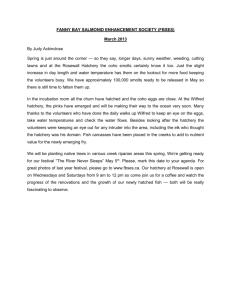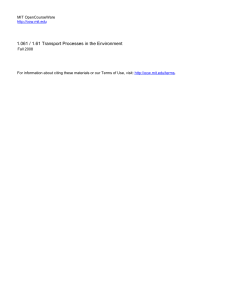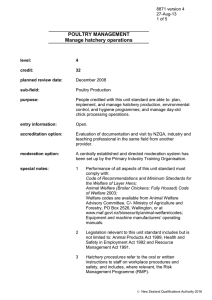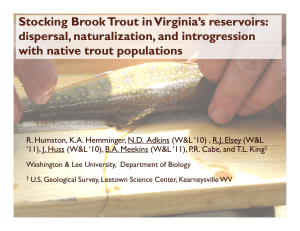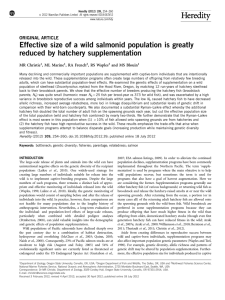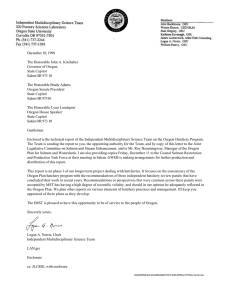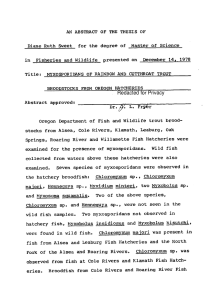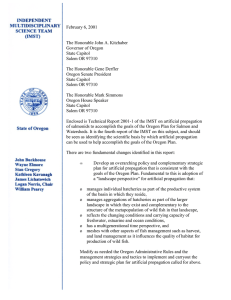e h r
advertisement
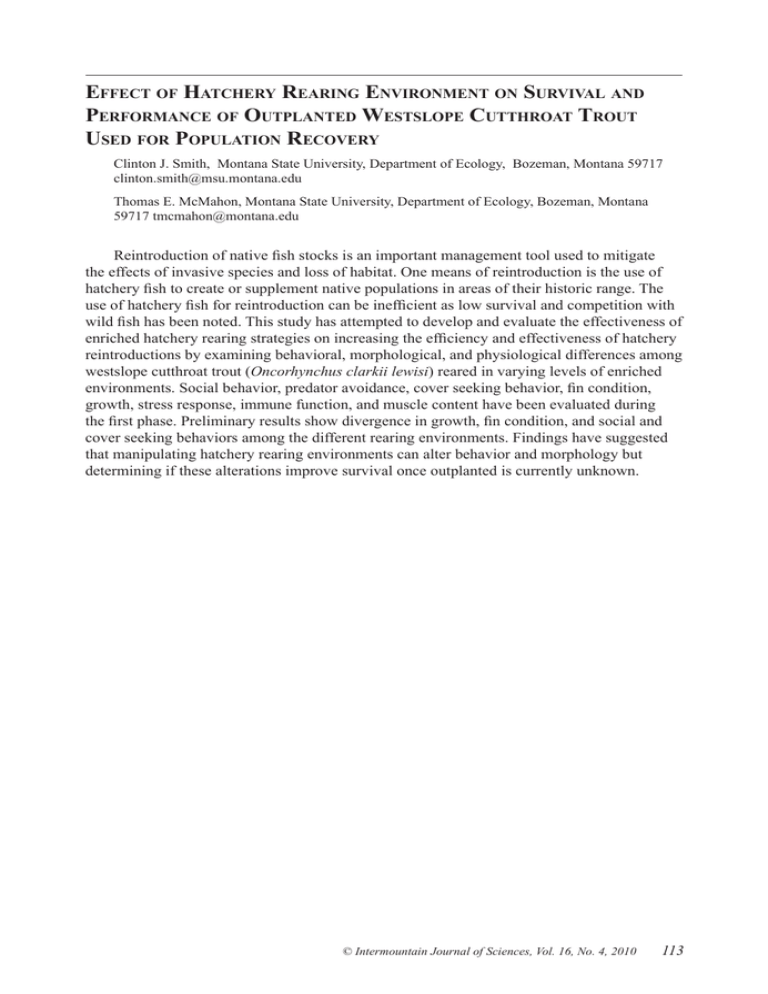
Effect of Hatchery Rearing Environment on Survival and Performance of Outplanted Westslope Cutthroat Trout Used for Population Recovery Clinton J. Smith, Montana State University, Department of Ecology, Bozeman, Montana 59717 clinton.smith@msu.montana.edu Thomas E. McMahon, Montana State University, Department of Ecology, Bozeman, Montana 59717 tmcmahon@montana.edu Reintroduction of native fish stocks is an important management tool used to mitigate the effects of invasive species and loss of habitat. One means of reintroduction is the use of hatchery fish to create or supplement native populations in areas of their historic range. The use of hatchery fish for reintroduction can be inefficient as low survival and competition with wild fish has been noted. This study has attempted to develop and evaluate the effectiveness of enriched hatchery rearing strategies on increasing the efficiency and effectiveness of hatchery reintroductions by examining behavioral, morphological, and physiological differences among westslope cutthroat trout (Oncorhynchus clarkii lewisi) reared in varying levels of enriched environments. Social behavior, predator avoidance, cover seeking behavior, fin condition, growth, stress response, immune function, and muscle content have been evaluated during the first phase. Preliminary results show divergence in growth, fin condition, and social and cover seeking behaviors among the different rearing environments. Findings have suggested that manipulating hatchery rearing environments can alter behavior and morphology but determining if these alterations improve survival once outplanted is currently unknown. © Intermountain Journal of Sciences, Vol. 16, No. 4, 2010 113
